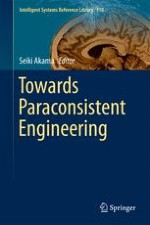2016 | OriginalPaper | Buchkapitel
11. Temporal Logic Modeling of Biological Systems
verfasst von : Jean-Marc Alliot, Robert Demolombe, Martín Diéguez, Luis Fariñas del Cerro, Gilles Favre, Jean-Charles Faye, Naji Obeid, Olivier Sordet
Erschienen in: Towards Paraconsistent Engineering
Aktivieren Sie unsere intelligente Suche, um passende Fachinhalte oder Patente zu finden.
Wählen Sie Textabschnitte aus um mit Künstlicher Intelligenz passenden Patente zu finden. powered by
Markieren Sie Textabschnitte, um KI-gestützt weitere passende Inhalte zu finden. powered by
